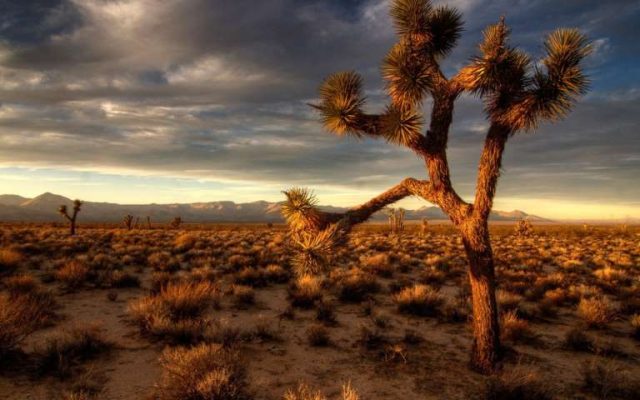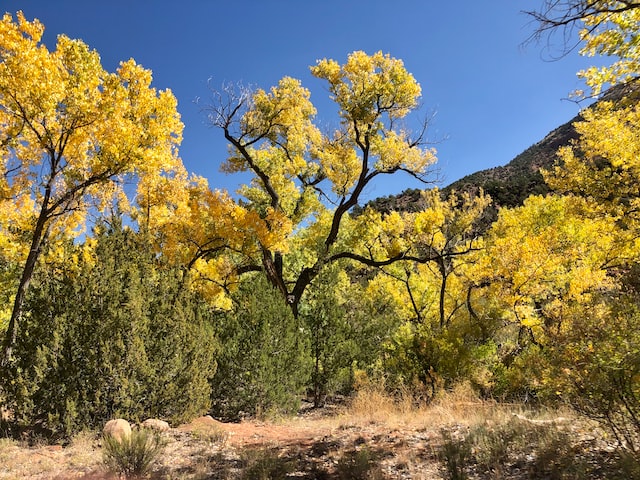
The desert isn’t the most hospitable place in the world, yet it attracts thousands of adventure-seekers every year. Some pursue new challenges, while others are smitten with barchan dunes, the stark simplicity of the desert landscape, the spectacularity of wildflowers blooming after a rainfall, breathtaking canyons, and incredible inhabitants having unusual defense and protection mechanisms.
Whatever location you plan to visit, be it the Painted Desert of Arizona or the Sahara Desert situated in Africa, you should have basic desert survival skills because getting lost due to a dust storm is not uncommon. So here are some of our essential tips for survival in the desert.
Planning & Preparation
When it comes to traveling to places with extreme climates, preparation is everything. First, you need a detailed plan of where your destination is, how exactly you’ll get there, and when and where you will take breaks. We understand that the greatest attraction of adventuring is not having a plan, but this statement is not applicable here. Also, make sure other people know about your plans.
In case some unforeseen circumstances disrupt your plan, you’ll have the best chance for survival with the right desert survival gear, which includes:
- Fire-starting gear;
- Water-purification tablets;
- Knife/multi-tool;
- First aid kit;
- Compass and paper maps (better to not rely on a GPS unit);
- Bandana or scarf to protect your face during a sandstorm;
- Stock water and some food;
- Warm blanket;
- Sunglasses;
Make sure to pack it even if you drive through the desert – you never know where a breakdown might get you. Also, don’t sacrifice a place in your backpack for any hunting gear. We’ll discuss it in detail below, but for now, let’s just say that hunting isn’t the most clever way of wasting energy.

Protecting Yourself from Heat and UV
Though not all deserts are hot, most of them are. Usually, the desert climate implies extreme temperatures, dramatic temperature fluctuations during the day, and low humidity. The terrain is poorly vegetated, so there are no trees that might provide cover from the blazing sun. Open water sources aren’t plentiful either. Basically, it means getting water is hard, and the sun is the biggest danger of the desert. Let’s talk about sun exposure first.
Most people think that peeling off clothing is effective against heat. Actually, it’s the worst you can do in the desert. Your body won’t get cooler. Instead, you’ll get sunburns, heat stroke, and dehydration.
You’ll be surprised, but Sahara Bedouins fully cover themselves in two layers of clothing. A light-colored fabric reflects heat, while dark-color garments absorb more UV rays. Get light-colored clothing with built-in UV protection (40-50 UPF) and long sleeves, and cover your head with a wide-brim hat.
Also, plan a rest during the mid-day because temperatures get enormously high around 2 p.m. Desert nomads usually take a nap at this time of day.
Staying Hydrated
That will be your next concern when surviving in the desert. Let’s take a minute and talk about how our body works. When your body is hot, it starts sweating. Our sweat is mainly water with salts, so when the sweat evaporates, the skin cools. So in a situation when you have unlimited access to water, sweating is a good thing. But what if you’re out of it?
The best strategy will be preserving sweat by maintaining normal body temperature. That means don’t wander aimlessly in the sun and travel only in the early hours and at sunset. During the day, build/find a shelter to sit the hottest hours out and keep yourself covered. Also, you need to stay off the ground as it gets hotter than the air. Make yourself a cushion to sit on.

Getting Water
The harsh truth of life is that a human can survive only three days without water. So it’s imperative to find a source as soon as possible while trying to produce as little sweat as possible. So how to find water in the desert? Here are some options:
- Look for signs of life. Birds, insects, and animals are also looking for water, so if you follow their trails, you may find it.
- Growing vegetation also hints there’s some underneath. Broad-leafed trees require more water than pines, so if you’ve located palm trees, cottonwoods, willows, and mule fat (North America), there can be water underground.
- Collect dew from plants and rocks with your clothing before sunrise.
- Look for dry river beds and streams. Your best try is at the bent, on the outside edge, because this area may have depressions with the last water dregs.
- Explore rock formations for natural pools. Moist sand and algae on rocks provide evidence of water, at least on a seasonal basis.
- When exploring canyons, stay high to avoid getting caught in flash flooding!
Boil or purify any water you find in the desert. If you have no means for it, drink untreated water because dehydration is the biggest of your concerns, and you’ll probably find help within 72 hours.
Can You Drink from a Cactus
Have you noticed that our tips on finding water in the desert don’t include drinking cactus water? That’s because cacti protect their bodies with acids and potent alkaloids that go hard on human kidneys and can cause temporary paralysis, vomiting, and diarrhea. As you see, you risk losing water plus getting sick. So no, you must avoid drinking from and eating cacti.
The only exceptions are the pricky pearl and the fishhook barrel – they have these detrimental chemicals less concentrated.

Making Fire
At night, desert temperatures can go very low, sometimes below freezing. That’s why you should pack some fire-starting gear and a blanket. A fire will also allow you to purify water, cook food, ward off critters, signal for help, and regain mental strength.
Getting Food in the Desert
We’ve mentioned that hunting is not recommended in a desert survival situation because you’ll lose too much energy and water (with sweat). While you can try trapping animals, better try catching lizards and eating plants.
You should thoroughly cook the lizard and clean your hands after handling it because its skin has salmonella. Don’t touch the Gila monster and Mexican beaded lizard because these species are poisonous. Also, stay away from the mouth and teeth of the iguana and the monitor lizard.
Don’t eat plants you don’t know. Pack a guide to edible desert plants. Don’t put your hands under or into rocks because there may be dangerous critters.
Signaling for Help
When trying to survive and get out of the desert, try signaling. Build a fire to send smoke into the air, spell out SOS or HELP in rocks and sticks, or use a mirror to reflect sunlight. Even if there are no signs of humans, try your best, stay calm, and preserve energy and sweat.





